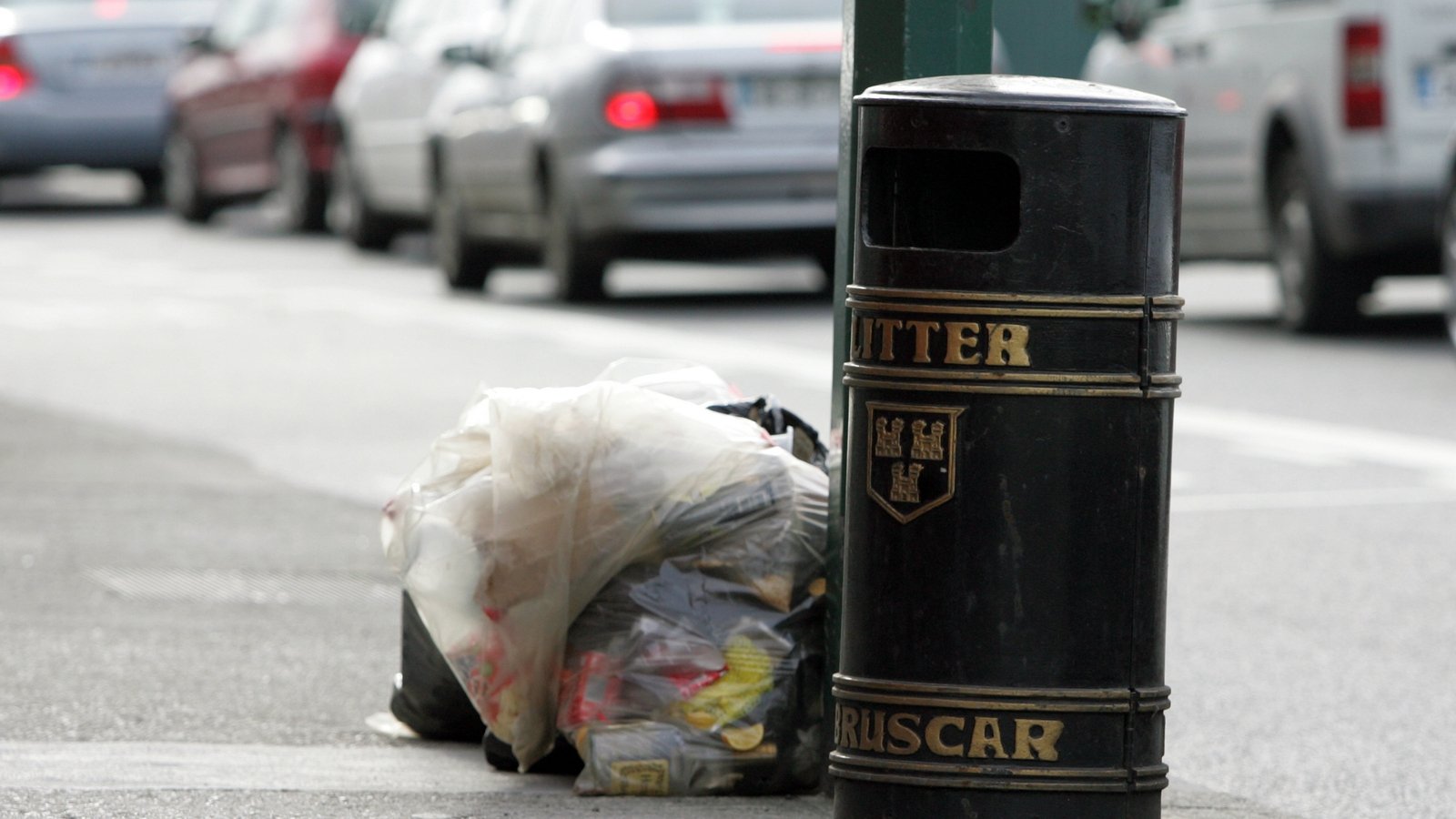Bussiness
Deposit Return Scheme makes impact on litter levels

The Deposit Return scheme has resulted in a significant reduction in the number of cans and bottles thrown onto streets and an overall improvement in litter levels nationwide, according to the latest national litter survey from the Irish Business Against Litter alliance.
However, the survey found plastic bottles are still the third most prevalent form of litter.
The alliance is expecting further improvement as people become more accustomed to the scheme.
Litter levels in more than 500 locations across 40 urban areas are monitored for this annual survey.
The number of sites deemed clean across the country is up. No town was judged to be either a litter blackspot or heavily littered.
The Deposit Return scheme played its part.
So far, it has resulted in almost 30% fewer cans and 20% fewer plastic bottles littering streets, according to the survey.
Further reductions are expected as legacy non-returnable items are flushed out of the system in the months ahead.
Irish Business Against Litter said these initial results indicate that if there is a monetary incentive to do the right thing, people will respond, and the same logic applies to a coffee cup levy.
It said tackling specific litter types with tailored measures is the most effective way of ridding our streets of litter.
The study, conducted by An Taisce on behalf of IBAL, showed a healthy rise in towns reaching the upper tier of cleanliness – ‘Cleaner than European Norms’ – and a 35% fall in the number of towns branded ‘littered’.
Naas in Co Kildare was cleanest of the 40 towns and cities in the survey.
It was followed, in order, by Monaghan, Blanchardstown, Kilkenny, Ennis, Castlebar and Nenagh in Co Tipperary.
Cork’s Northside, followed by Ballymun, Dublin’s North Inner City, Dublin City Centre and Ballybane in Galway city and were deemed littered and came bottom in the list.
Overall, city areas fared well compared to last year, however.
There were notable improvements in Limerick city, Mahon in Cork, Tallaght, and the north Dublin inner city.
Limerick South (Galvone) recorded its best ever result.
For Dublin city however, which came second last in the list, this was the fourth year in a row litter has got worse.
Among the blackspots encountered by An Taisce inspectors were a basement in Lamb Alley in Dublin which featured “vast quantities of alcohol cans, broken windows, and all manner of food litter”.
Balbutcher Lane in Ballymun was littered with dumped items including street cones, car parts, and carpets.
Meanwhile, Fairfield Meadows on Cork’s northside was “subject to monumental levels of dumping” according to the survey.
Coffee cups, while down, were present in 1 of every 5 sites surveyed nationwide.
Cigarette butt litter remains stubbornly high as was present at 31% of the more than five hundred sites surveyed.
The Deposit Return Scheme does not include beer bottles, which were found in 10% of sites.
“Is there a good reason why we cannot go further and make these bottles returnable also?” asked Conor Horgan of Irish Business Against Litter.
He said it is disappointing also that we see no progress in the development of degradable chewing gum.
“Across a swathe of industries, companies are adapting their products and packaging in the interests of the environment, but there seems to be no impetus for gum manufacturers to take such a step. As a result, their products lie on our streets for decades and decades. The situation with cigarette butts is little different.”
“Littered streets simply do not square with the high prices our visitors face in the Capital and threaten our long-term tourism prospects,” he added.
The 2024 IBAL Anti-Litter League 1st round results
1 Naas – Cleaner than European Norms
2 Monaghan – Cleaner than European Norms
3 Blanchardstown – Dublin Cleaner than European Norms
4 Kilkenny – Cleaner than European Norms
5 Ennis – Cleaner than European Norms
6 Castlebar – Cleaner than European Norms
7 Nenagh – Cleaner than European Norms
8 Sligo – Cleaner than European Norms
9 Mallow – Cleaner than European Norms
10 Killarney – Cleaner than European Norms
11 Ballybeg, – Waterford Cleaner than European Norms
12 Waterford City – Cleaner than European Norms
13 Dublin Airport Environs – Cleaner than European Norms
14 Maynooth – Cleaner than European Norms
15 Mullingar – Clean to European Norms
16 Arklow – Clean to European Norms
17 Portlaoise – Clean to European Norms
18 Carlow – Clean to European Norms
19 Tullamore – Clean to European Norms
20 Drogheda – Clean to European Norms
21 Galway City Centre – Clean to European Norms
22 Wexford – Clean to European Norms
23 Cavan – Clean to European Norms
24 Cork City – Centre Moderately littered
25 Tralee – Moderately littered
26 Athlone – Moderately littered
27 Buncrana – Moderately littered
28 Tallaght – Moderately littered
29 Limerick South – Moderately littered
30 Dundalk – Moderately littered
31 Navan – Moderately littered
32 Mahon – Cork City – Moderately littered
33 Limerick City Centre – Moderately littered
34 Roscommon – Moderately littered
35 Longford – Moderately littered
36 Cork Northside – Littered
37 Ballymun – Littered
38 Dublin North Inner City – Littered
39 Dublin City Centre – Littered
40 Galway Inner City – Ballybane – Littered










